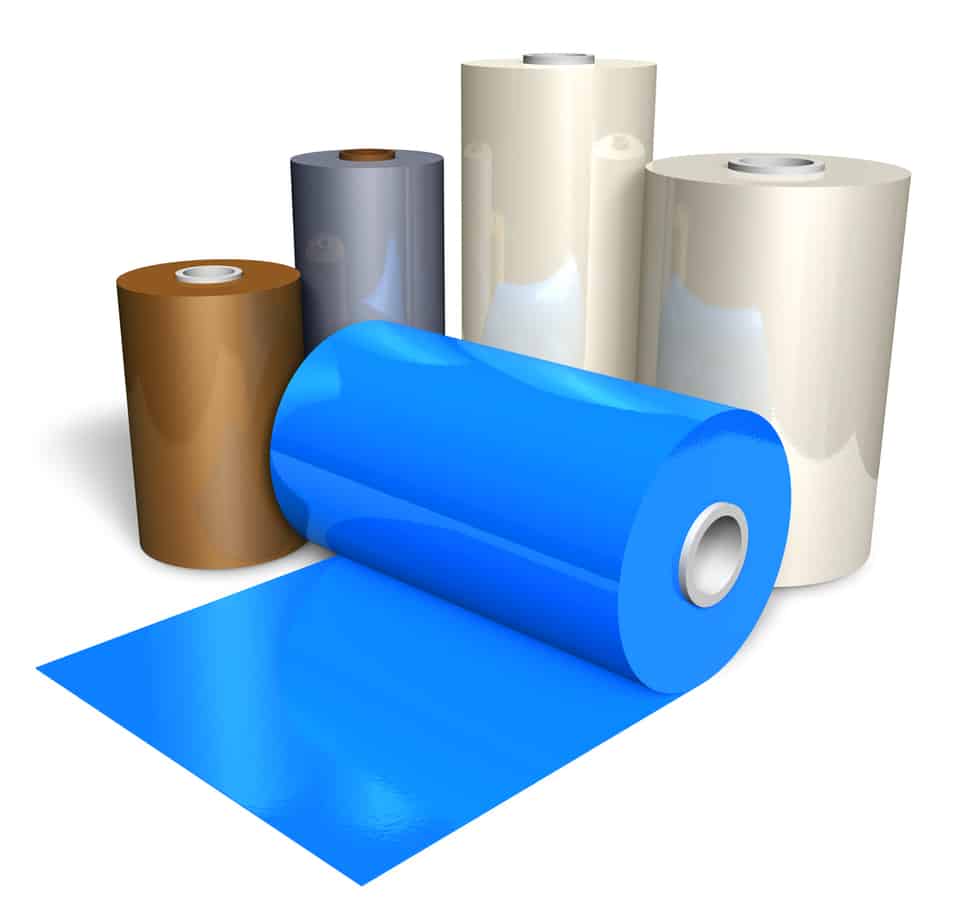This post may contain affiliate links, which means that we get commissions for purchases made through such links, at no additional cost to you. As an Amazon Associate we earn from qualifying purchases.
The lifespan of thermal transfer ribbons is a subject of interest among those that print and use labels. This article takes a close look at how long thermal transfer ribbons last and the different factors that could affect the lifespan of ribbons. What you are about to read is a product of an in-depth study.
How long do thermal transfer ribbons last? The expiry date of thermal ribbons if left on the shelf ranges between one to two years. But if you unbox a thermal ribbon and leave it unused, it will start depreciating and may become unusable after 24 hours. These figures, however, depend on the ribbon type, manufacturer, model, and storage conditions.
The lifespan of thermal ribbons vary from one type to another. More so, how long your thermal ribbons will last depends on how you store and handle them. There’s much more to know about the lifespan of thermal printers. Read on as we explain them below.

Do All Thermal Ribbons Have The Same Lifespan?
All types of thermal transfer ribbons share a similar shelf-life. They expire within one to two years if unopened. You will often find the expiry date on the pack. But the lifespan of thermal ribbons upon exposure differ from one type to the other. Wax ribbons have the least stability, while resin ribbons are the most stable.
If you unbox a wax ribbon and leave it unused, it will only remain stable for about 24 hours. Resin ribbons, on the other hand, are much more stable and can last for up to 120 hours after unboxing them. Wax-resin ribbons contain a mixture of wax and resin, so their lifespan falls somewhere in the middle of the two.
| Wax Ribbon | Wax-Resin Ribbon | Resin Ribbon | |
| Shelf-Life | 1 year | 1-2 years | 1-2 years |
| Stability (Lifespan after unboxing) | 24 hours | 48 hours | 120 hours |
Let’s dig a bit deeper into the three types of thermal ribbons:
Wax Ribbons
The base on the ink in this ribbon type is wax. But some brands reinforce their wax with a little resin. Wax ribbon is most suitable for uncoated paper labels because they may not adhere well to glossy or synthetic materials. More so, wax has a low melting point, so they are very vulnerable to damage under direct sunlight exposure whether on the shelf, outside the pack, or on the label.
Labels printed with wax ribbons also have a low resistance to abrasion resistance. So they are mostly used in short-term printing applications. Since they are the cheapest, you can use them whenever archiving is not a concern.
Wax-Resin Ribbons
This ink in this ribbon type combines resin and wax, usually in equal amounts. This type is more stable than full-wax ribbons and can withstand high temperature (thermal resistance) and abrasion. You can use them on some synthetic media and coated paper. They last longer than wax ribbons, so they are suitable for product markings, logistic processes, and packaging labels.
Resin Ribbons
This type lasts the longest and is suitable for permanent markings and long-term applications. Industries, where labels are likely to be under extreme conditions, use resin ribbons because they can withstand chemical substances and high temperatures. The ink typically contains 100% resin with no wax additive but some low-quality varieties have wax additives.
How Can You Make Your Thermal Ribbons Last Long?
Thermal ribbons only have a maximal lifespan when they are kept in proper storage conditions. For starters, you should keep thermal ribbons away from moisture and direct sunlight. These are the two most common agents that reduce the shelf-life, stability, and image life of thermal ribbons. As such, you should ensure to keep your thermal ribbons and labels in the proper storage conditions.
The table below summarizes the appropriate conditions to make thermal ribbons last long
| Ideal Temperature (Range) | Ideal Relative Humidity (Range) | |
| Storage Conditions | 40°F (5°C) to 95°F (35°C) | 20 to 80% |
| Shipping Conditions | 23°F (-5°C) to 113°F (45°C) | 20 to 85% |
| Printing Conditions | 41°F (5°C) to 95°F (35°C) | 45 to 85% |
Storage Conditions for Long Shelf Life
Most manufacturers recommend a one-year shelf life for their thermal transfer ribbons. Shelf life refers to the time it takes for the ribbon to become unfit for use after the date of production, provided that it remains in the pack.
These are the storage conditions recommended by manufacturers to ensure optimum ribbon shelf life:
- The temperature of the storage area should be between 40°F (5°C) and 95°F (35°C)
- The appropriate relative humidity for storing thermal ribbons is in the range of 20-80%
- Avoid exposure to direct light from outdoor environments or open windows
- Avoid compression during storage and while transporting the ribbon from one place to the other.
Shipping Conditions for Thermal Ribbons
Primarily, you must avoid compression on your thermal transfer labels while shipping it. You should also pay attention to temperature and humidity. Shipping conditions can drastically reduce the lifespan of your thermal ribbon.
According to manufacturers, the following shipping conditions will keep your ribbons viable for up to 1 month:
- Temperature range of 23°F (-5°C) and 113°F (45°C)
- Relative humidity should be between 20-85%
Printing Conditions for Optimum Image Life of Thermal Ribbons
The type of ribbon and print material you use, among many other factors, will affect the image life of your label. There is an ideal temperature range and an ideal relative humidity for printing with thermal ribbons to ensure ling image life. Image life refers to how long your printed image will remain clear and legible.
Where it concerns thermal ribbons, the following conditions are ideal for long image life:
- Printing should be done under the ideal temperature range 41°F (5°C) and 95°F (35°C)
- You should print in an area of 45-85 percent relative humidity
Thermal Ribbon Lifespan: Common Mistakes People Make
People often make the mistake of storing thermal ribbons in their car rather than in a cool, dark room. Some people even store them in a walk-in cooler or keep around hot areas, like the kitchen. These mistakes will reduce the lifespan of your thermal ribbon.
Here are some of the common mistakes you should avoid for your thermal ribbons to last long:
Storing Them In The Car
You should never store thermal ribbons in your car. The condition inside your car often mimics outdoor conditions. Your ribbons will be exposed to sunlight and heat, which can reduce their lifespan. Wax ribbons are the most susceptible to damage under these conditions. But regardless of the type, a degree of damage will occur if you keep thermal ribbons in your car long enough.
Walk-in Cooler Storage
The humidity of walk-in coolers makes them unfit for storing thermal ribbons. Their relative humidity is much higher than the optimal storage humidity for thermal ribbons. More so, temperature fluctuations in the walk-in cooler could also damage thermal ribbons.
Keeping Them Around The Kitchen Area
You should never keep your thermal ribbons in the kitchen area. Remember that there might be ovens and open flames in your kitchen from time to time. These are not good for thermal ribbons. The heat from your oven has a similar effect to direct sunlight exposure and can damage your ribbons.
✅ Video – The Value of Thermal Ribbons
Do you know the value of thermal ribbons? Thermal ribbons are essential for thermal transfer printers. But then, how are they vital to the overall printing experience and print quality? By the time you finish watching this video, you will have answers to these questions.
Related Questions
Are There Only Black Thermal Transfer Ribbons?
Thermal transfer ribbons are available in different colors other than black. You can also find white and color ribbons. However, black ribbons make up about 90% of ribbons on the market. The colors available are mostly the primary colors – red, blue, and yellow.
Most ribbons have a single color that will print on the entire label. But some ribbons have multiple colors that offer hologram-like prints. Some also offer prints in colors that are only visible under UV light. This ensures product authenticity.
What Is The Best Ribbon?
In terms of quality and durability, resin ribbons are the best. But it might not be the best for every printing application. The best ribbon for your application is one that matches your print material and meets your printing needs at an acceptable price for the application.
Wax ribbons may not have the best quality but if you are printing a shipping barcode that you wouldn’t need after 2 months, you should use wax ribbons. Resin ribbons will give better quality but they are too expensive for the printing application
How Often Should I Clean My Printhead?
You should clean your printhead each time you install new rolls of ribbon. But if the area where you use your printer is dirty, you should clean the printhead daily. To clean, use a lint-free clothing material soaked with little Isopropyl alcohol.
A dirty printhead will print low-quality images. And over time, if you refuse to clean the printhead or if you are not cleaning it properly, it will eventually damage. Cleaning your printhead regularly will increase its lifespan and save you the cost of untimely replacement.
Conclusion
Thermal transfer ribbons should last long if you follow the recommendations for storage, shipping, and printing. Just remember to always keep ribbons away from heat (including from sunlight exposure), compression, damp rooms, and water. A bad ribbon would print poor images, smear on the label, or rip and tear while printing is ongoing. Having read this article, you should know everything you need to do to prevent these from happening.
